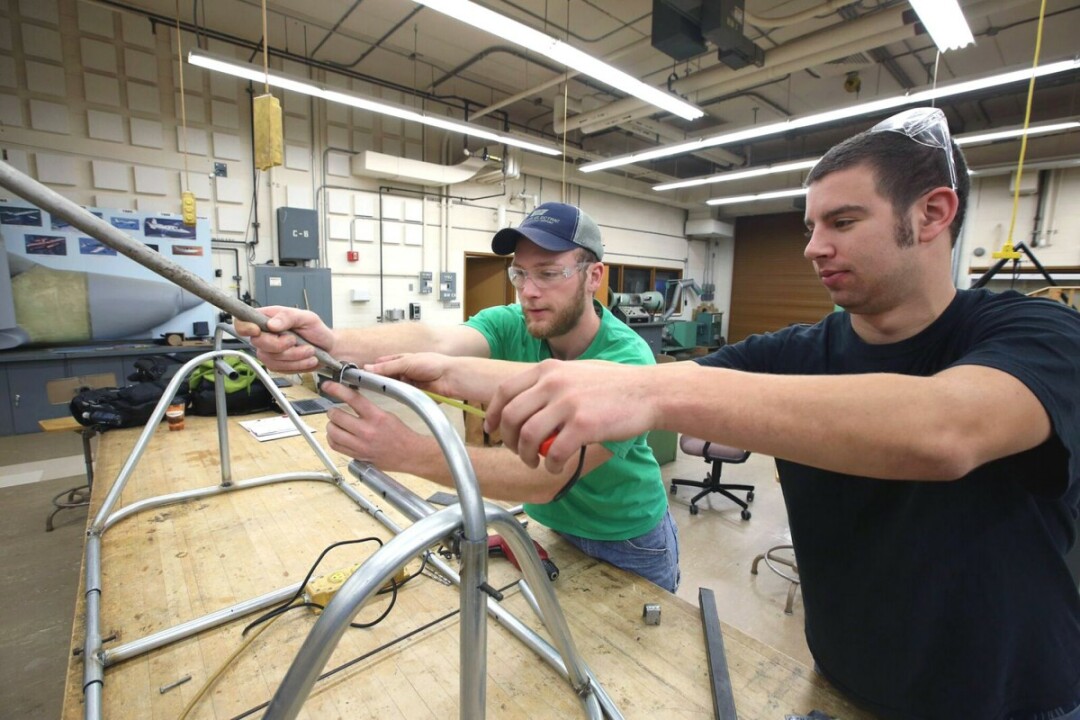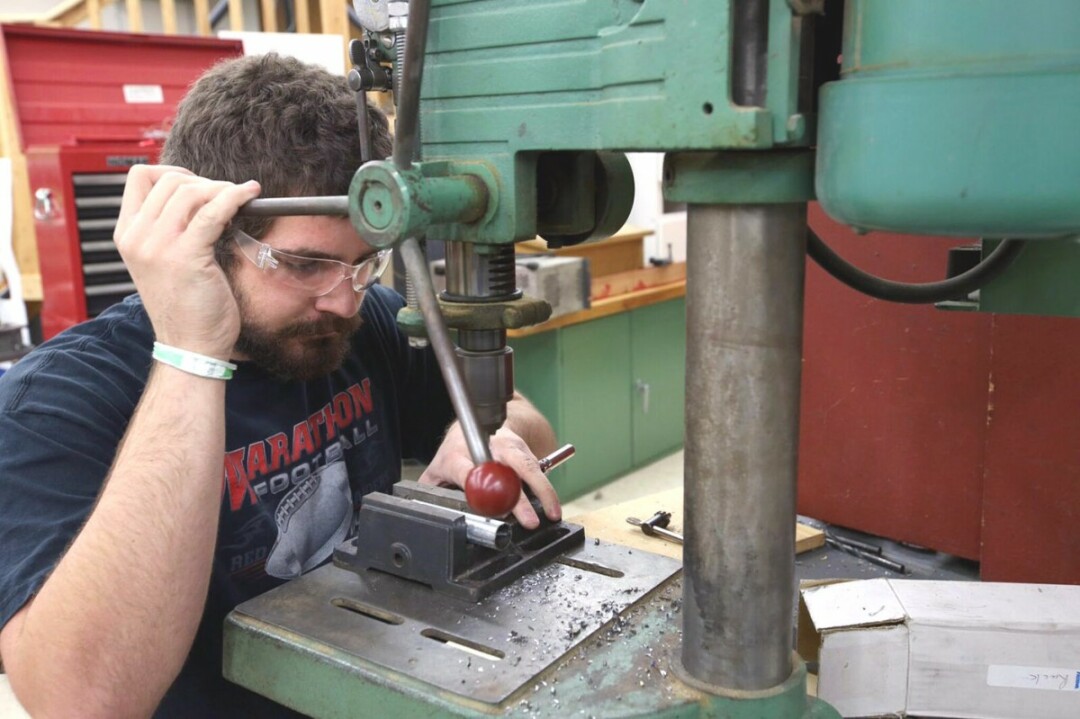Rolling With It: UW-Stout class helps farmer with fence cart invention

The Discovery Center at UW-Stout takes pride, among its varied services, in helping entrepreneurs flesh out ideas for products or businesses.
“We have a good process – an initial feasibility study – that asks people the right questions. We can get a good idea if it’s going to fly or not,” said Roger Gehring, a development engineer with the Discovery Center.
Gehring’s colleague, Gus Myran, a project manager, agreed. “We’re a third party. We’re not going to blow any smoke. We’ll give them our opinion,” he said.
So when Matthew Buvala, a farmer from Pepin County, contacted the Discovery Center about his invention, a cart on two wheels that makes it easier to move temporary fencing, Gehring and Myran took a good, hard look at it.
At first, Myran was skeptical that no one had come up with an idea similar to Buvala’s. The cart is not overly complicated but can save farmers considerable time and backbreaking labor. “There must be hundreds of them out there,” Myran said, recalling his first thoughts.
There weren’t. Not even one. That’s why the Discovery Center and UW-Stout teamed up to help Buvala guide the Buvala Fence Cart closer to production.
The cart is ideal for farmers who rotate grazing sites for animals such as chickens, goats, and sheep, and frequently need to move their flexible fencing. Instead of bundling and moving fencing and the embedded posts by hand, farmers can load a section 200 feet or more onto the cart’s rack.
After the cart is pulled by hand – or hitched to a utility vehicle – to the new site and one end of fence section is anchored, the cart is rolled away and the fencing pulls cleanly off the angled, two-prong rack, falls to the ground in a line, and is ready to set up.
Buvala, who repaired camera equipment for 20 years in the Navy, was tired of moving 400 to 500 feet of fencing by hand about twice a week for his 275 free-range, grass-fed chickens. He had to hold the bulky fencing with one hand and stack it with the other; fence sections often became entangled.
“The fencing can be a mess to move,” Buvala said. “There had to be something better to move it from Point A to Point B.”
After making six prototypes – a couple of years’ worth of getting up before sunrise and tinkering in his barn – Buvala developed a working model and arranged to have it made at Pepin Farm Implement in Pepin. He realized, however, that if he wanted to market the cart on a larger scale he would need to get the price down and make design improvements.

Taking it to the next level
Buvala came in contact with Eric Turner, executive director of the Dunn County Economic Development Corp., who suggested that Buvala work with the Discovery Center at UW-Stout.
Once Gehring and Myran determined that the invention had merit and was highly marketable – not just for farmers but municipalities and organizers of events that set up flexible fencing – they helped Buvala take the next step.
The Discovery Center provides innovative ideas and solutions for business and industry by using student, faculty, and staff expertise and by connecting with specialists from around the region.
The center connected Buvala with a senior engineering class taught by Professor Scott Springer. Four students in the class worked on the Buvala Fence Cart as a capstone project. After conducting a complete analysis, students wrote a detailed report that:
Recommended changing the cart’s construction to round metal tubing instead of square. Round tubing can be bent so that fewer welds are needed.
Recommended making the cart with smaller components, making it easier to assemble and less expensive to ship.
Created a physical prototype model of the proposed design.
Conducted a weight safety analysis.
Provided Buvala with the engineering specifications a manufacturer will need for larger-scale production.
Provided solid model computer files of the various components.
The changes are expected to bring down the retail cost of the cart from $475 to $300.
Students who worked on the project are Cole Bergman, of Marathon; Brandon Lawson, of Minneapolis; Jordan Reidt, of Alma; and Todd Tollefson, of Manitowoc.
“This project is an excellent example of the many real-world projects our engineering and technology students have assisted regional companies and entrepreneurs with,” Springer said. “It’s a win-win situation; the students win by having the opportunity to develop a design for a real application, while the sponsors are provided with a fresh design and documentation for very little investment.
“It’s great to help students transition from student thinking toward professional thinking about product development and manufacturing,” Springer added.
Ready to roll
Once manufactured to the new specifications, the Buvala Fence Cart, for fences from four to six feet high, can be shipped in a box and assembled with nine bolts. An attachment, sold separately, allows the cart to be stored vertically with fencing to save space.
Buvala is in the process of finding a manufacturer and a company to help him market the cart. He will also work with the Small Business Development Center at UW-Eau Claire.
“You have to work through the process to be successful and take the right steps,” said Luke Kempen, SBDC director.
The Buvala Fence Cart is ready to roll. “Now the maturity level of the product is right where it needs to be,” Myran said. “It’s a passion for the inventor. It takes four or five years to get a new product to market.”
For more information about the cart, including how to purchase one, email Buvala at mbuvala@centurytel.net. To see a video demonstration of the cart, go to http://buvalafarm.com/cart-video. To learn more about UW-Stout’s Discovery Center, which includes the Manufacturing Outreach Center and Fab Lab, go to www.uwstout.edu/discoverycenter.


